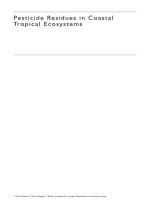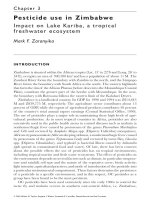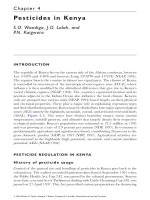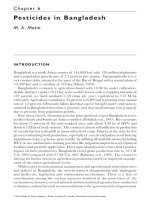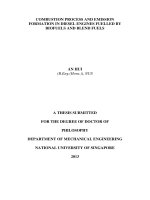Excellence in business communication 12e by vthill and brovee chapter 11
Bạn đang xem bản rút gọn của tài liệu. Xem và tải ngay bản đầy đủ của tài liệu tại đây (803.03 KB, 49 trang )
Copyright © 2017 Pearson Education, Inc.
Excellence in
in
Excellence
Business Communication
Communication
Business
Chapter 11
Planning Reports and Proposals
Copyright © 2017 Pearson Education, Inc.
Learning Objectives
1.
(1 of 3)
Adapt the three-step writing process to reports and
proposals.
2.
Describe an effective process for conducting business
research, explain how to evaluate the credibility of an
information source, and identify the five ways to use
research results.
Copyright © 2017 Pearson Education, Inc.
Chapter 11 - 3
Learning Objectives
3.
(2 of 3)
Explain the role of secondary research, and describe the two
major categories of online research tools.
4.
Explain the role of primary research, and identify the two
most common forms of primary research for business
communication purposes.
Copyright © 2017 Pearson Education, Inc.
Chapter 11 - 4
Learning Objectives
5.
(3 of 3)
Explain how to plan informational reports and website
content.
6.
Identify the three most common ways to organize analytical
reports.
7.
Explain how to plan proposals.
Copyright © 2017 Pearson Education, Inc.
Chapter 11 - 5
Applying the
the Three-Step
Three-Step Writing
Writing Process
Process to
to
Applying
Reports and
and Proposals
Proposals
Reports
(LO 1) Adapt the three-step writing process to reports and
proposals.
Copyright © 2017 Pearson Education, Inc.
Chapter 11 - 6
Categories of Typical Reports
Informational Reports
Analytical Reports
Proposals
Monitor and Control
Operations
Assess Opportunities
Internal Proposals
Implement Policies and
Procedures
Solve Problems
Demonstrate Compliance
External Proposals
Document Progress
Copyright © 2017 Pearson Education, Inc.
Support Decisions
Chapter 11 - 7
Analyzing the Situation
Compose a
a Statement
Statement of
of Purpose
Purpose
Compose
•
•
State why you’re preparing the report.
State what you plan to deliver.
Prepare a
a Work
Work Plan
Plan for
for the
the Project
Project
Prepare
•
•
Identify project-related tasks.
Establish a timeline for the project.
Copyright © 2017 Pearson Education, Inc.
Chapter 11 - 8
Sample Work Plan
Copyright © 2017 Pearson Education, Inc.
Chapter 11 - 9
Gathering Information
Planning
Planning Your
Your Research
Research
Statement of
Purpose
Copyright © 2017 Pearson Education, Inc.
Audience Needs
Audience Needs
Information Needs
Chapter 11 - 10
Selecting the Right Combination of Media
and Channels
Media Requirements
Feedback Preferences
Document Uses
Media Choice
Copyright © 2017 Pearson Education, Inc.
Chapter 11 - 11
Organizing Your Information
More
Less
Resistant Audience
Receptive Audience
Direct Approach
Indirect Approach
Less
Copyright © 2017 Pearson Education, Inc.
More
Chapter 11 - 12
Supporting Your
Your Messages
Messages with
with Credible
Credible
Supporting
Information
Information
(LO 2) Describe an effective process for conducting business research,
explain how to evaluate the credibility of an information source, and
identify the five ways to use research results.
Copyright © 2017 Pearson Education, Inc.
Chapter 11 - 13
Applying the Research Process
1.
2.
3.
4.
5.
Plan your Research
Locate Data and Information you Need
Process Data and Information
Apply your Findings
Manage Information
Copyright © 2017 Pearson Education, Inc.
Chapter 11 - 14
Planning Your Research
(1) Develop a Problem Statement
(2) Identify Essential Information
(3) Generate Research Questions
Copyright © 2017 Pearson Education, Inc.
Chapter 11 - 15
Avoiding Ethical Lapses
•
•
•
•
•
•
Keep an open mind.
Respect the privacy of participants.
Document and credit sources.
Respect intellectual property rights.
Don’t distort information from sources.
Don’t misrepresent your intentions.
Copyright © 2017 Pearson Education, Inc.
Chapter 11 - 16
Locating Data and Information
Secondary Research
Primary Research
•Books
•Surveys
•Magazines
•Interviews
•Newspapers
•Observations
•Public Websites
•Experiments
Copyright © 2017 Pearson Education, Inc.
Chapter 11 - 17
Evaluating
Information Sources
•Reputation
•Methodology
•Potential Bias
•Verification
•Purpose
•Completeness
•Credibility
•Logical Scrutiny
Copyright © 2017 Pearson Education, Inc.
Chapter 11 - 18
Using Research Results
•
•
•
•
Analyze the data.
Quote, paraphrase, or summarize information.
Draw conclusions.
Make recommendations.
Copyright © 2017 Pearson Education, Inc.
Chapter 11 - 19
Quoting, Paraphrasing, and
Summarizing Information
(1 of 2)
Avoid Plagiarism
Quoting
Quoting
Cite
Sources
Observe
Paraphrasing
Paraphrasing
Context
Summarizing
Summarizing
Copyright © 2017 Pearson Education, Inc.
Chapter 11 - 20
Quoting, Paraphrasing, and
Summarizing Information
Copyright © 2017 Pearson Education, Inc.
(2 of 2)
Chapter 11 - 21
Drawing Conclusions and Making
Recommendations
Conclusions
Interpretation of the Facts in the
Report
Copyright © 2017 Pearson Education, Inc.
Recommendations
Suggestions for What to Do
about the Facts
Chapter 11 - 22
Conducting Secondary
Secondary Research
Research
Conducting
(LO 3) Explain the role of secondary research, and describe the two
major categories of online research tools.
Copyright © 2017 Pearson Education, Inc.
Chapter 11 - 23
Finding Information
at a Library
Newspapers
Business
Membership
or Periodicals
Books
Directories
Almanacs and
Government
Statistics
Publications
Copyright © 2017 Pearson Education, Inc.
Databases
Chapter 11 - 24
Finding Information Online
Actively search
search for
for
Actively
existing information
information
existing
Copyright © 2017 Pearson Education, Inc.
Monitor selected
selected
Monitor
sources for
for new
new
sources
information
information
Chapter 11 - 25


